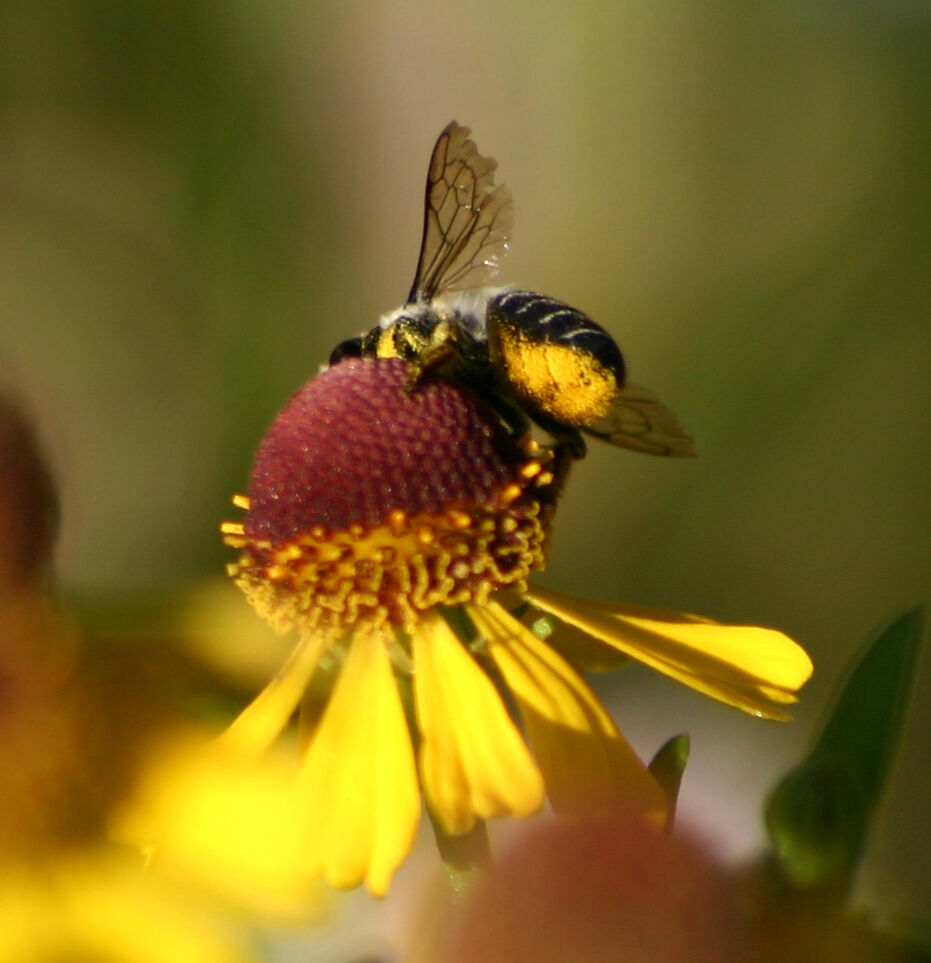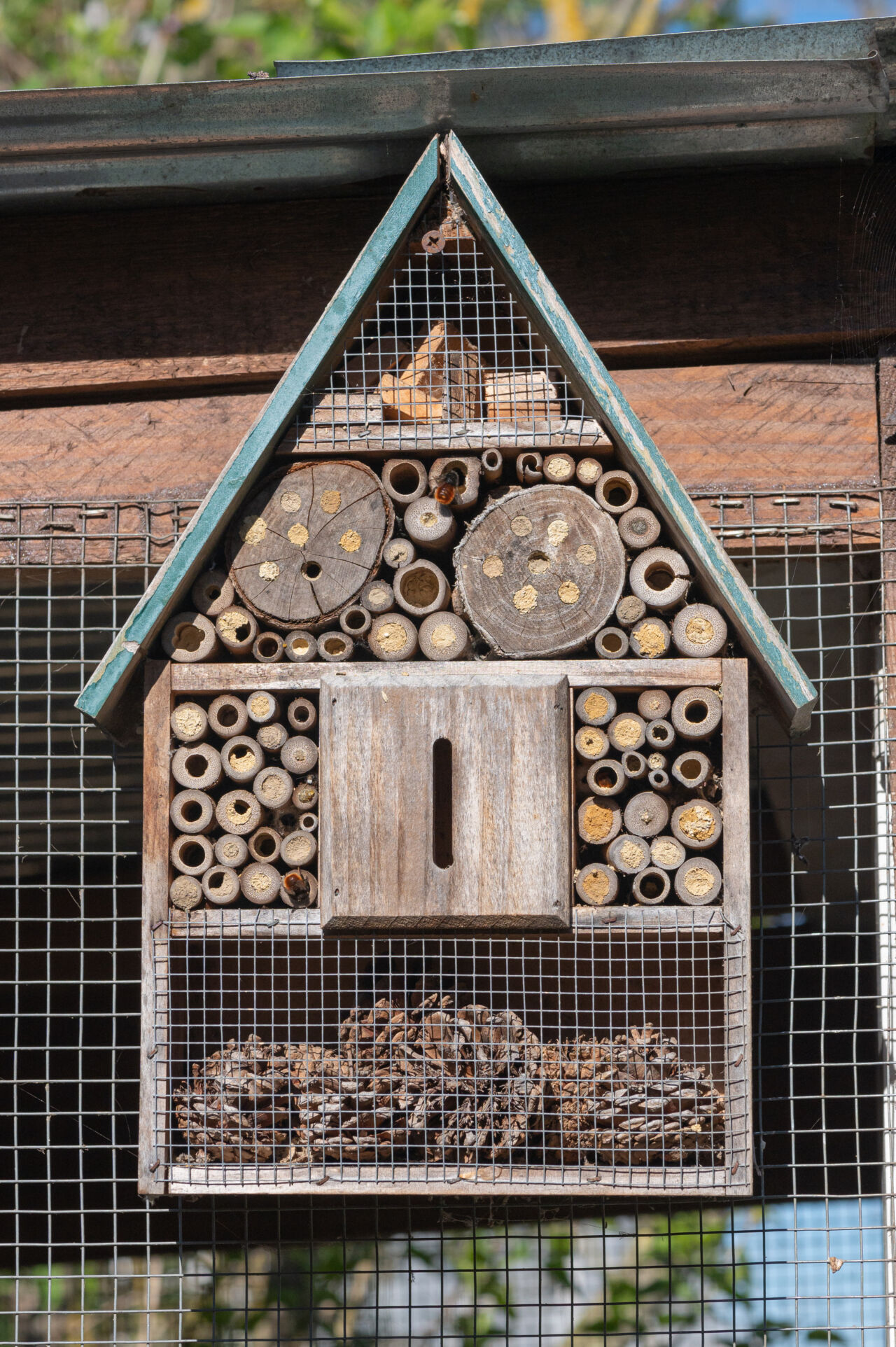The red-tailed mason bee: Nature's tiny masons
The red-tailed mason bee fascinates by its solitary nesting behavior and unique pollen collection technique. It is an important pollinator that contributes to the biodiversity of our ecosystems.

Osmia bicolor, the red-tailed or two-colored mason bee, has received its name for obvious reasons! Image: Wikimedia Commons/František ŠARŽÍK, CC license
Profile
- Osmia bicolor, the red-tailed mason bee (sometimes also called the two-colored mason bee), is a solitary bee that belongs to the Megachilidae family.
- These tiny insects measure around 8-12 mm in length.
- They play an essential role in pollinating plants and contribute to the biodiversity of our ecosystem.
Classification
- Kingdom
- Animalia
- Phylum
- Arthropoda
- Class
- Insecta
- Order
- Hymenoptera
- Family
- Megachilidae
- Genus
- Osmia
- Species
- O. bicolor
No sandcastles
One of the most intriguing aspects of the red-tailed mason bee is its nesting behavior. Unlike honeybees that live in large colonies, mason bees are solitary bees, with each female bee constructing her own nest. The name "mason bee" comes from their remarkable ability to construct nests using mud or other natural materials. The female bee collects mud and builds individual nest chambers in pre-existing cavities such as hollow stems, woodpecker holes, or other suitable crevices. She carefully creates a series of cylindrical cells that are separated by mud partitions. After stocking a mixture of nectar and pollen in each cell she lays one egg on top of the food and seals the cell with mud.
The red-tailed mason bee, however, is particularly interested in prefabricated housing in the form of snail shells, a fact which gave it also the name ‘witch bee’. They usually close the snail shells with chewed leaf material and camouflage the nesting site with grass and pine needles. The larva hatches from the egg, consumes the stored pollen and nectar, and then spins a cocoon to pupate. Adult bees emerge in the spring, and the females begin searching for suitable nesting sites to construct their nests, continuing the cycle.

A red-tailed mason bee with filled scopa entering a snail shell. Image: © wildbienen.de/Volkmar Nix
Did you know?
Belly brush pollination
Another interesting fact about the red-tailed mason bees is their pollination behavior. What makes them unique is their technique for collecting pollen. Rather than using their hind legs like honeybees, mason bees have a specialized structure on their underside, the “abdominal scopa", which is a dense brush of hairs that they use to collect pollen from flowers. This unique adaptation adds to their efficiency as pollinators, which is primarily due to the fact that they are polyectic, i.e. they visit a wide range of flowers in search of food for their offspring.

A Megachilid bee with abdominal scopa, South Carolina, USA. Unlike other bee species, such as the honeybee, pollen is carried on the abdomen rather than the legs. Image: Wikimedia Commons, CC License
Did you know?
Switzerland is home to a relative of the red-tailed mason bee, Osmia steinmanni, that has not yet been observed anywhere else in the world. It has been reported in the region of Säntis in the Canton of Appenzell Innerrhoden (Ebenalp, Altenalp and Fälalp) and in the Canton of Graubünden (Avers).
To view this content, you must accept marketing and third-party cookies.
Start a housing program
Conservationists and gardeners alike appreciate the role of Osmia bicolor as an effective pollinator and seek to protect and encourage their populations. One way to do this is by providing suitable nesting sites for them in the form of "bee hotels". These are structures made of wood with drilled holes or hollow tubes that mimic natural nesting cavities for mason bees. In regard to the red-tailed mason bee, it would be ideal to place some loose snail shells within or near that hotel as well. Especially when the hotel is placed on a balcony, it is essential for the bees to have access to loose soil, sand or clay in direct vicinity to be able to close their nest cells. Placing these hotels in gardens or orchards can help support local populations of these beneficial bees and promote pollination of nearby plants since naturally occurring nesting sites, such as good quality empty snail shells, can be scarce.

Insect hotels such as this one may help the reproduction of solitary bees like the red-tailed mason bee. Image: Adobe Stock
